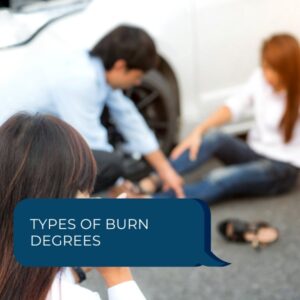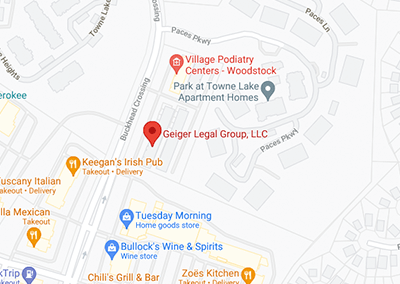Types of Burn Degrees

Many accidents result in burns, which doctors classify into degrees depending on their severity. The lawyers at Geiger Legal Group, LLC have helped many burn victims pursue compensation for burns that were someone else’s fault. We understand the devastating impact of these injuries, even with minor burns. To discuss how our burn injury lawyers can help you after an accident, contact us for a free consultation today.
Degrees of Burns
Burns are classified into six categories or degrees:
- First-degree — First-degree burns damage only the outermost layer of skin, the epidermis. They often heal on their own within a week or so. First-degree burn victims may experience redness, swelling, pain, and peeling.
- Second-degree — Second-degree burns damage the epidermis and the subsequent skin layer, the dermis. They will look bright red, swollen, and shiny and may develop blisters.
- Third-degree — Also called full-thickness burns, third-degree burns destroy the two top layers of skin, including hair follicles, sweat glands, and some nerve endings. These burns may appear black, brown, white, or yellow.
- Fourth-degree — Fourth-degree burns extend deeper than the epidermis and dermis into the fat layer, called the hypodermis.
- Fifth-degree — Fifth-degree burns destroy the epidermis, dermis, and hypodermis and reach the muscle. These serious injuries can be fatal or require amputation.
- Sixth-degree — As the most severe, sixth-degree burns destroy almost all muscle tissue, reaching the bone. Sixth-degree burns are almost certainly fatal.
Complications and Treatments for Burns
Burn complications and treatments depend on the severity. First-degree burns require minimal, at-home treatment, including cool water, antibiotic ointment, light gauze, and over-the-counter pain medication. Second-degree burns may require more significant treatment from a medical professional, including prescription-strength antibiotic ointment.
The victim often needs skin grafts for third-degree burns. Skin grafts replace damaged tissue with healthy tissue taken from another area of the body. Fourth-degree burns will almost certainly require a skin graft. Emergency treatment is critical with fifth-degree and sixth-degree burns, as they can be fatal. Victims who survive fifth-degree or sixth-degree burns will almost certainly suffer permanent body damage, significant scarring, or amputations.
Victims with third-degree or worse burns may experience the following complications:
- Heart arrhythmia
- Disfigurement
- Swelling
- Organ failure
- Infections such as sepsis or tetanus
- Hypothermia (low body temperature)
- Hypovolemia (low blood volume)
How to Prevent Burns
You can reduce your chance of suffering burn injuries by following these tips:
- When you enter a space, note where the fire extinguisher, fire alarm, and fire escape are located.
- If you are involved in an accident involving fuel leakage, get away from the vehicle.
- Do not touch hot engine parts.
- Use caution whenever around chemicals, electricity, or heat sources.
You should also remember to keep children away from hot objects and heat sources.
Contact the Burn Injury Lawyers at Geiger Legal Group, LLC
If you suffered a burn injury in an accident that was someone else’s fault, the lawyers with Geiger Legal Group, LLC can help you seek compensation from the at-fault party. You do not have to suffer without support. Contact our experienced, compassionate burn accident attorneys today for a free consultation.














